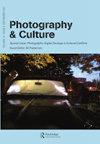Ottomar Anschütz’s Animal Photography through the Lens of Darwinism
IF 0.3
4区 艺术学
0 ART
引用次数: 0
Abstract
Along with Eadweard Muybridge and Etienne-Jules Marey, Ottomar Ansch€utz was one of the most important practitioners of late nineteenthcentury chronophotography. Although his work remains woefully overlooked, Ansch€utz invented the electric Schnellseher (Electrotachyscope) and thus significantly contributed to the technical history of cinematography. A considerable part of his photographic work is devoted to the depiction of animals, including around 1,500 photographs housed in the archive of Berlin University of the Arts. When Ansch€utz presented his first instantaneous photographs in 1883-4 in Berlin, the technological advancement of his images was striking in contrast to Muybridge’s early photography from 1878-79. While Muybridge depicts the horse and rider as dark silhouettes on the picture plane, in Ansch€utz’s images the bodily movement and anatomy appear in full clarity and splendor. Many of his contemporaries within the arts and sciences praised the strong impression his lively images exuded. This became possible through a new precision of depiction—the use of extremely light-sensitive gelatin dry plates in combination with Ansch€utz’s invention of the rouleau-shutter, which he located directly in front of the photographic plate. Compared to his contemporaries’ photographs, Ottomar Ansch€utz’s images generate the illusion of spatial freedom, which leaps over to the depicted object. Instead of a narrow stage and a black background, there is a vast expanse of light, an atmospheric landscape reminiscent of Leonardo da Vinci’s famous sfumato technique. The deliberate dissolution of what isOttomar ansch兹透过达尔文主义的镜头拍摄动物
Ottomar Ansch€utz与Eadweard Muybridge和Etienne Jules Marey一起是19世纪末计时摄影最重要的实践者之一。尽管他的作品仍然被严重忽视,但Ansch€utz发明了电动Schnellseher(电子测速仪),从而为电影摄影的技术史做出了重大贡献。他的摄影作品中有相当一部分致力于描绘动物,包括柏林艺术大学档案馆中的约1500张照片。1883-4年,当安施·乌茨在柏林展示他的第一张即时照片时,他的图像的技术进步与穆布里奇1878-79年的早期摄影形成了鲜明对比。当穆布里奇将马和骑手描绘成画面上的黑暗剪影时,在安什·乌茨的图像中,身体的运动和解剖结构显得非常清晰和精彩。许多与他同时代的艺术和科学界人士都称赞他生动的形象给人留下的深刻印象。这是通过一种新的精确描绘而成为可能的——使用极为感光的明胶干版,再加上安什·欧-乌茨发明的rouleau快门,他将其直接放置在摄影版的前面。与同时代的照片相比,Ottomar Ansch€utz的图像产生了空间自由的错觉,这种错觉会跳到所描绘的物体上。取而代之的不是狭窄的舞台和黑色背景,而是广阔的灯光,这是一种让人想起列奥纳多·达·芬奇著名的sfumato技巧的大气景观。故意解散
本文章由计算机程序翻译,如有差异,请以英文原文为准。
求助全文
约1分钟内获得全文
求助全文

 求助内容:
求助内容: 应助结果提醒方式:
应助结果提醒方式:


